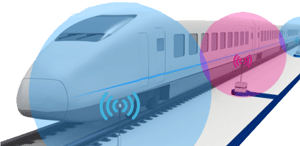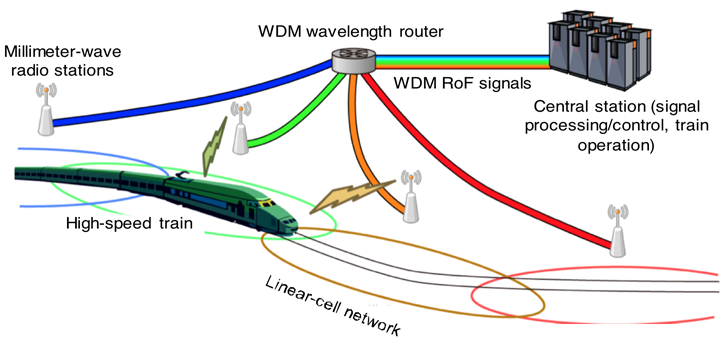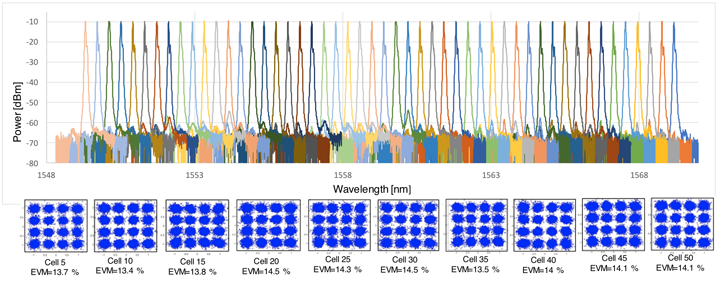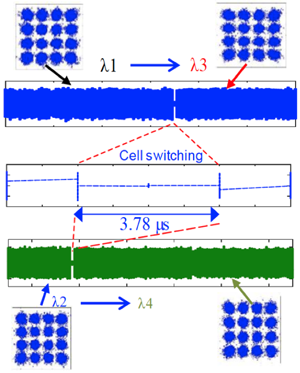Towards Uninterrupted Communication for Users Moving at 500 km Per Hour:
Realization of High-capacity Seamless Communication for High-speed Railways
May 8, 2018
National Institute of Information and Communications Technology
Highlights
- High-capacity transmissions of 20 Gbit/s over a converged fiber-wireless network in the 90-GHz band.
- Ultra-fast remote radio station switching in less than 10 μs to realize a handover-free communication network.
- Possibility for developing smooth communications for high-speed trains, even while they move at high speeds of 500 km/h or more.
Summary
Background
Achievements

Future Prospects
Reference
Appendix
1. High-speed linear cell communication system

2. Experimental results


performance of 16-QAM signals.
Technical Contact
Pham Tien Dat, Atsushi Kanno, Naokatsu Yamamoto
Network Science and Convergence Device Technology Laboratory
Network System Research Institute
Tel: +81-42-327-7300, 6876, 6982
E-mail:

























Media Contact
Sachiko Hirota
Press Office
Public Relations Department
Tel: +81-42-327-6923
Fax: +81-42-327-7587
E-mail:





















